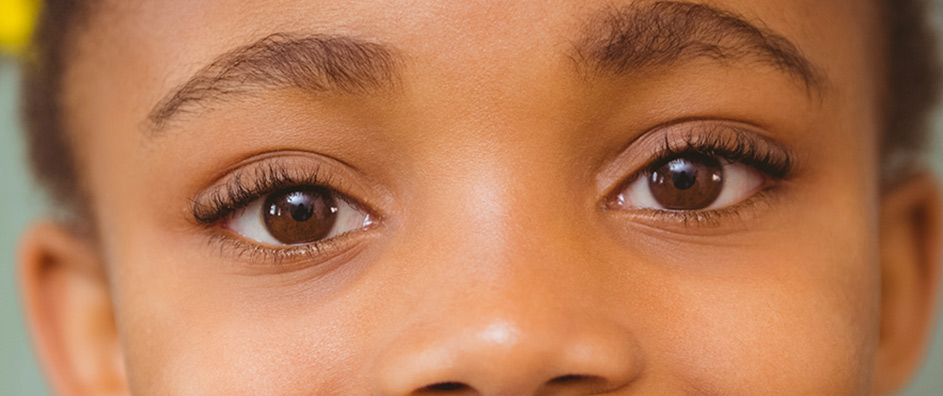Within the rich tapestry of Bahá’í teachings, the metaphor of the “Pupil of the Eye” stands out as an evocative representation of inclusion and the interdependence of humanity. This metaphor prompts us to reflect on the profound connections that bind us together, even amidst our myriad differences. It invites a playful examination: How do we truly understand the essence of inclusion in today’s often fragmented world? Addressing this question presents a challenge – one that encourages us to delve deeper into the philosophy of unity that Bahá’u’lláh espoused.
To explore the depth of this metaphor, we must first contextualize it within the Bahá’í framework. The “Pupil of the Eye” is a symbol of the Persian concept of “the beloved”—representing the relationship between humanity and God. In this context, the pupil signifies protection and care, reflecting the idea that individuals should regard each other as integral to the fabric of society. Just as the eye safeguards the pupil, so too must we safeguard the well-being of all individuals, fostering an environment where every person is valued and included.
This metaphor offers a rich opportunity to investigate the inherent inseparability of human beings. The Bahá’í teachings posit that humanity is akin to the parts of a body, each member essential for the optimal functioning of the whole. The eye, as it protects the pupil, serves as a reminder that every individual’s contributions are vital. Hence, the challenge arises: can we reframe our perception of inclusion to regard it as a fundamental right rather than a privilege? The act of inclusion should not be a mere choice; it should become a priority—like the manner in which one cares for their own eye.
Resonant within this metaphor is the Bahá’í emphasis on unity in diversity. The pupil, while a singular entity, exists within a larger, intricate system. Similarly, while cultures, races, and ideologies may differ, they all contribute to the vibrancy of human existence. The Bahá’í writings urge us to transcend prejudices and societal barriers, fostering an understanding that diversity is not something to be merely tolerated but celebrated. This celebratory recognition requires an intentional shift in our attitudes and behaviors—a task that may prove challenging.
In practice, cultivating a Bahá’í understanding of inclusion demands engagement with the fundamental characteristics that define humanity: dignity, respect, and empathy. Each person embodies these attributes, irrespective of their background or beliefs. Hence, cultivating relationships rooted in these tenets becomes essential. However, how can we sustain an inclusive mindset when confronted with ingrained biases, societal divisions, or even our personal limitations? The answer lies in embracing a continuous journey of self-reflection and education.
Understanding the Pupil of the Eye metaphor also entails recognizing our responsibility toward others. Just as the eye adjusts its focus to ensure clarity of vision, so must we adapt our perspectives. This dynamic adaptability can foster an environment where individuals feel seen, heard, and valued. It encourages us to engage in dialogue, confront discomfort, and cultivate spaces where differing opinions are expressed with respect and dignity. Such endeavors might appear daunting, yet they lay the groundwork for a genuinely inclusive culture.
The teachings emphasize the importance of service to humanity—a manifestation of love and compassion in action. Service serves as a conduit through which one can express solidarity with fellow beings. Through acts of service, we emulate the tenderness with which the pupil is treated; we extend our concern beyond ourselves and into the lives of others. However, how do we encourage a culture of service that permeates our communities? The challenge must be undertaken collectively. Initiatives that foster community engagement and encourage volunteerism could empower individuals to see the value of their contributions within the larger humanitarian effort.
Moreover, to realize the aspirations of inclusion as articulated in Bahá’í teachings, it is incumbent upon each person to cultivate a mindset oriented toward teaching and learning. The discourse around inclusion must evolve, integrating new insights and responding to emerging challenges. People from across the spectrum of society must engage collaboratively, sharing experiences and resources to dismantle systemic barriers that inhibit shared human flourishing. This collective endeavor necessitates not only commitment but also courage—courage to confront biases, challenge the status quo, and mandate inclusivity, even when faced with opposition.
Additionally, the Bahá’í vision of inclusion aligns with a global perspective that transcends national borders. The metaphor of the pupil extends beyond personal relationships to encompass global interconnections. Individuals from diverse backgrounds contribute to humanity’s holistic vision and growth. In today’s interconnected world, this understanding of global interdependence is both timely and crucial. How do we navigate the complexities of global inclusion? Recognizing the intricacies of our shared existence shines light on our collective responsibility toward fostering an equitable world.
In conclusion, the metaphor of “The Pupil of the Eye” within Bahá’í teachings invites an exploration of inclusion that is profound and multifaceted. It challenges us to reimagine our obligations toward one another and encourages a commitment to building a society that reflects the values of unity, respect, and empathy. Armed with these principles, we can embark on a transformative journey toward a more inclusive world, one where every individual is cherished for their unique contributions. The path may prove challenging, yet it is reflective of the fundamental interconnectedness that defines our shared human experience.
